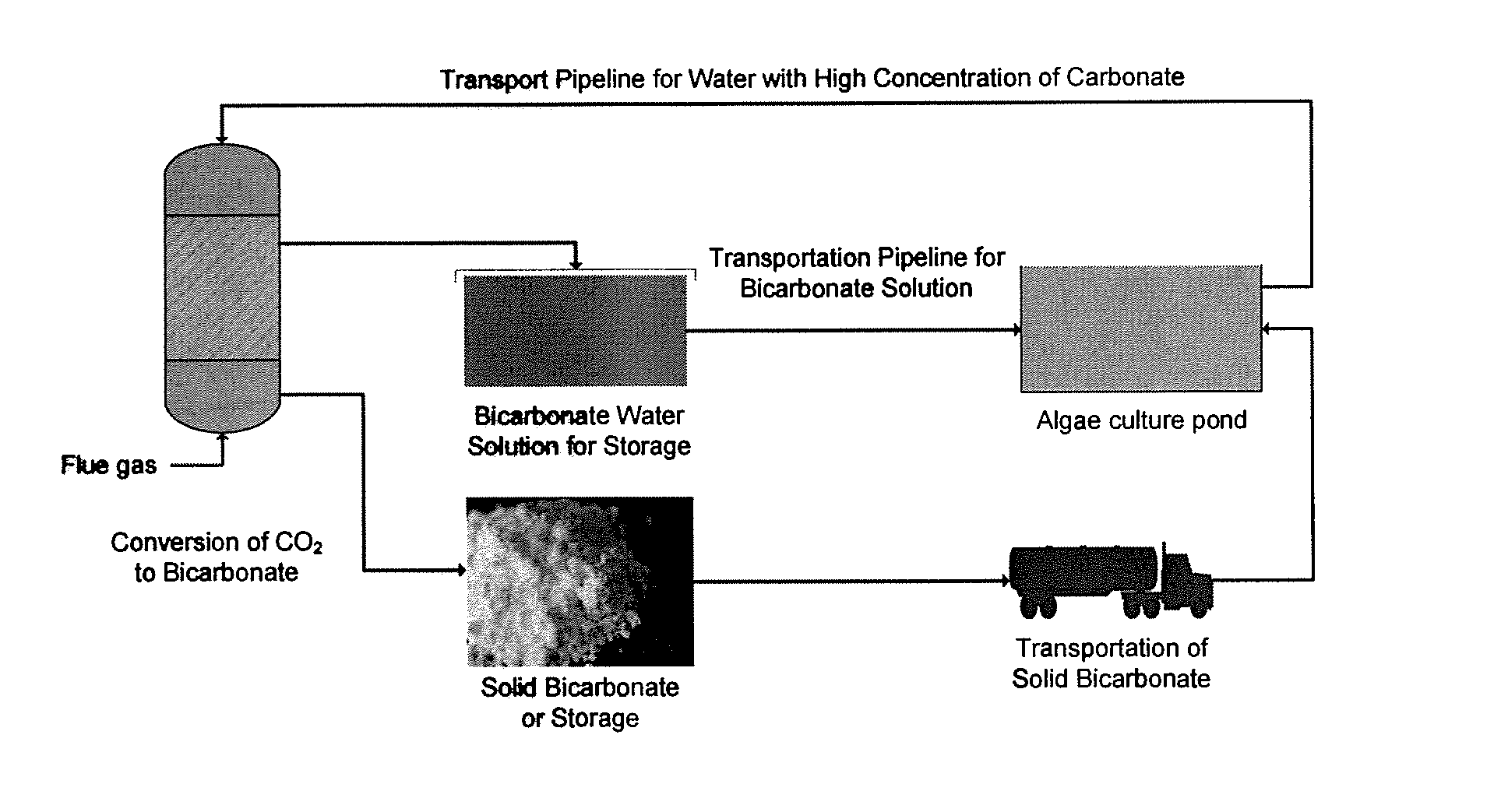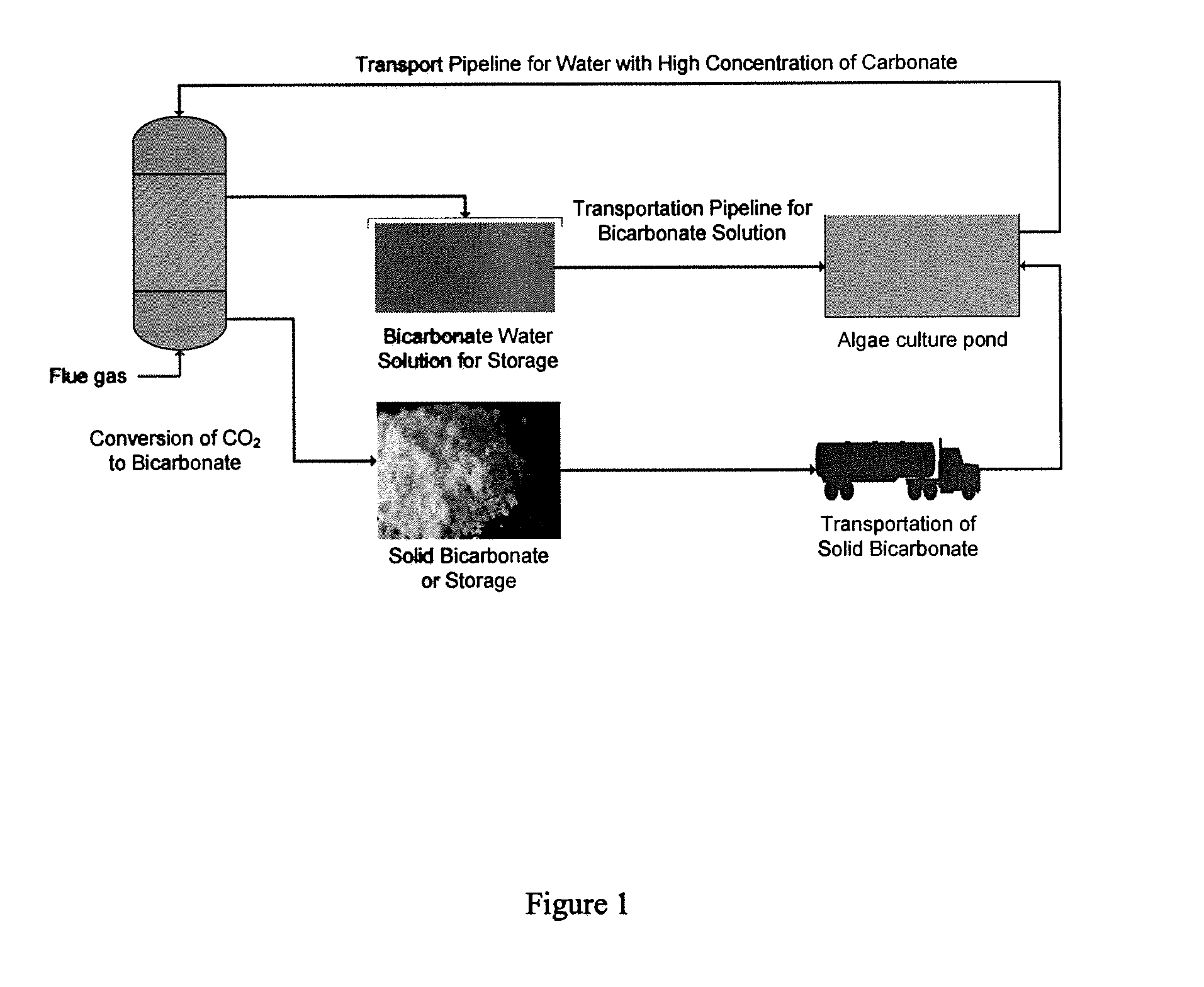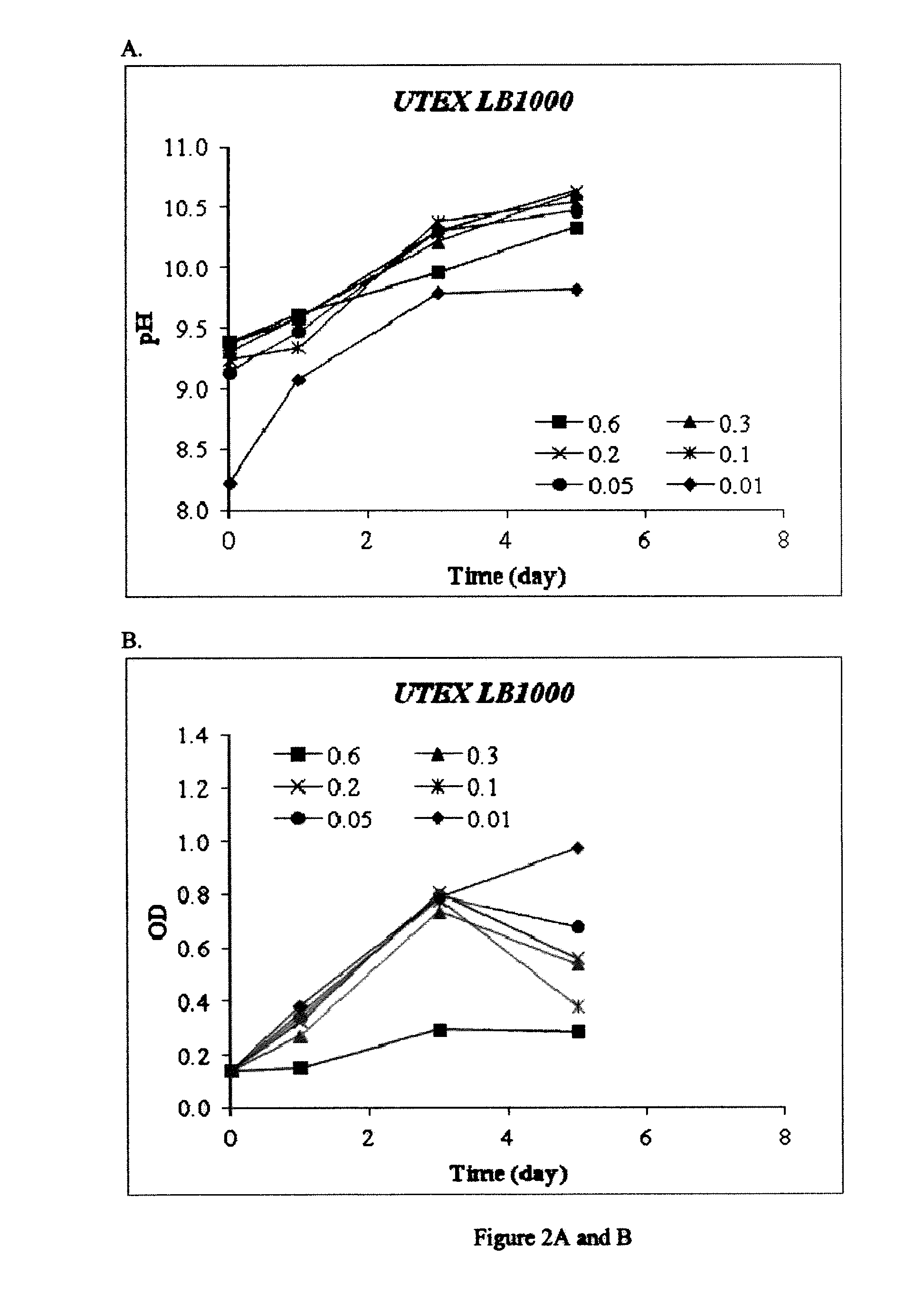Integrated carbon capture and algae culture
a carbon capture and algae technology, applied in the field of integrated methods and systems, can solve the problems of high cost of coal combustion process with carbon capture and storage, limited production, and increased cost of cosub>2 /sub>in geologic formations, and achieve the effect of less costly and less dangerous
- Summary
- Abstract
- Description
- Claims
- Application Information
AI Technical Summary
Benefits of technology
Problems solved by technology
Method used
Image
Examples
example 1
1. Strains and Medium
[0045]Dunaliella primolecta (UTEX LB 1000) is cultured with artificial seawater medium (UTEX) with reduced concentration of calcium (5% of original concentration) and magnesium (10% of original concentration).
2. Well-Plate Culture
[0046]The cells were cultured in the 24-well plate, 2 mL for each well. The culture room temperature was controlled at 20° C. Different concentrations of sodium bicarbonate were used as the inorganic carbon source, and no CO2 gas is delivered into the culture. The optical distribution was tested with 750 nm wavelength light for each sample.
[0047]Dunaliella primolecta grows to its maximum growth at 3rd day of culture (FIG. 2). The pH was further increased after 3 days culture, when the pH was greater than 10.0, and the final pH in some of the cultures were close to 10.5. Also, its growth in 0.3 M bicarbonate was at the same level as that with lower concentration, but 0.6 M bicarbonate resulted in poor growth. This result indicated that D...
example 2
1. Strains and Medium
[0050]Euhalothece ZM001 is cultured with a 1.0 M sodium bicarbonate concentration, and its compositions are:
CompositionConcentrationReferenceNaHCO384g / LKNO32.5g / LKCl2g / LNa2SO41.4g / LK2HPO40.38g / LA5 trace element1mL / L(Mikhodyuk et al., 2008)pH9.5
2. Culture in Photo-Bioreactor
[0051]The cells were cultured in photobioreactors with agitation, but not aeration. The light path for the photobioreactor was about 0.5 cm, and the photobioreactors were place under the light with intensity of 100 μmol / m2 / s. the culture temperature was 35° C.
[0052]The initial pH was adjusted to 9.5 with sodium hydroxide. With inoculation concentration of 1.2 g / L, the final biomass concentration in this culture was 4.8 g / L, and the daily productivity was 0.72 g / L / day (FIG. 4). The pH in this culture increased to 10.75 after 5 days culture, and this culture medium can be used to absorb more CO2.
PUM
| Property | Measurement | Unit |
|---|---|---|
| pressure | aaaaa | aaaaa |
| concentration | aaaaa | aaaaa |
| concentration | aaaaa | aaaaa |
Abstract
Description
Claims
Application Information
 Login to View More
Login to View More - R&D
- Intellectual Property
- Life Sciences
- Materials
- Tech Scout
- Unparalleled Data Quality
- Higher Quality Content
- 60% Fewer Hallucinations
Browse by: Latest US Patents, China's latest patents, Technical Efficacy Thesaurus, Application Domain, Technology Topic, Popular Technical Reports.
© 2025 PatSnap. All rights reserved.Legal|Privacy policy|Modern Slavery Act Transparency Statement|Sitemap|About US| Contact US: help@patsnap.com



